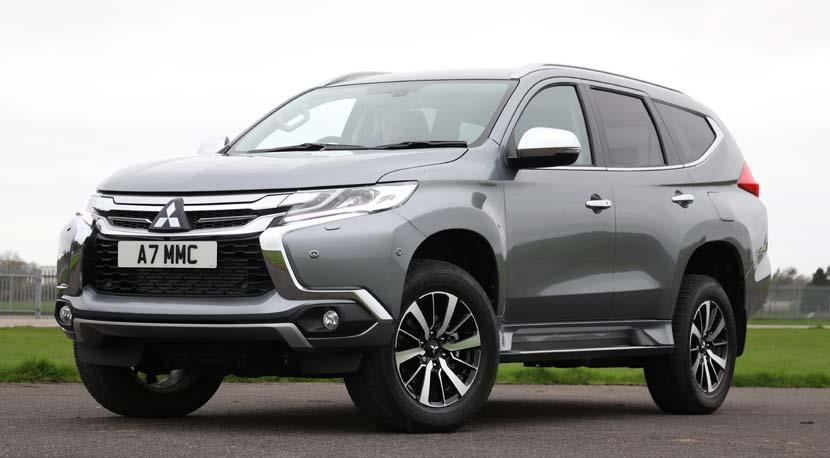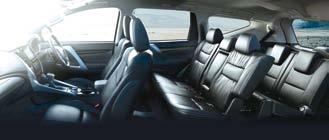
7 minute read
Motoring
advice FOR winter driving
As temperatures start to get lower and the nights draw in, it means one thing is certain: winter is only around the corner.
Advertisement
Unfortunately, as with much of the UK, there are car accidents on Lincolnshire’s roads every time there’s a cold snap – so anything you can do to help avoid any heartbreak has to be a good thing. The most important message is to err on the side of caution and not get behind the wheel if it’s snowing or a flurry is forecast.
Here’s your checklist to ensure your car is in tip-top condition before the bad weather hits.
1. Get your car serviced
If your car is due a service, get it done before the winter.
Take advantage of the free or discounted ‘winter car checks’ offered by some garages.
2. Check the battery
The battery should be the first priority. During the winter months it suffers from a double whammy of cold temperatures - reducing the output - and the increased use of lights, heater and blower, which place it under additional strain.
If your car won’t start because of a flat battery, you can try giving it a jump start.
3. Top up engine coolant with antifreeze
Engine coolant should be a 50/50 mix of water and antifreeze. You will need to top it up with antifreeze as it becomes diluted over time. 4. Check the condition of your tyres
As a car’s tyres are key to both steering and braking, it is essential they are in good condition.
5. Clean your lights
Check that all lights, indicators and rear reflectors are clean. Make sure there are no cracked lenses or blown bulbs, and don’t forget to check full beam headlights, fog lights and indicators.”
6. Wash your windscreen and wipers
Give your windscreen a thorough clean inside and out and top up your screen washer fluid with antifreeze.
7. Prepare for longer journeys
Before setting off on a longer journey, check the weather forecast, travel news and safest routes.
8. Carry a winter car breakdown kit
This should include a shovel, torch, blanket, hivisibility vest, screenwash, food and drink supplies, scraper and de-icer, and snow grips for your shoes in case you need to walk to safety.
And don’t forget a fully charged mobile phone.
9. Other important areas
Also, keep at least a quarter of a tank of fuel in case of unexpected delay and check the oil.
If you have a bit of motor know-how, check your brake pads, brake discs and brake fluid to ensure the brakes are fast and responsive.
Ensure the fan belt and alternator drive belts are tight and not worn and that plugs and other leads are in good condition and secure.
If you don’t feel confident making these checks, any garage should be able to help.
Winter car essentials
Here’s a checklist of the items you should always keep in your car over winter:
1. Ice scraper and de-icer
You never know when you’ll wake up to an iced over windscreen or come back to a frozen car after a day out.
Make sure you always carry an ice-scraper and de-icer so you can effectively defrost your windscreen. If you don’t remove snow and ice properly, you could get 3 points on your licence and a £100 fine.
2. Torch and spare batteries
Short days and long nights in winter mean you could be getting in and out of your car in the dark. Keep a torch handy to avoid any trips.
If you break down, you’ll need to find a safe place to wait for roadside assistance. A torch will help light your way on a dark verge.
3. A fully charged mobile phone
If you’re delayed because of bad weather (or a weather related incident), it’s a good idea to let your loved ones know. It’ll save them worrying and stop any distracting texts and phone calls coming in while you’re behind the wheel.
Just remember not to use a handheld phone while driving. Pull into a safe rest stop to make a call or ask a passenger to do it for you.
4. An in-car phone charger or power pack
This’ll help with number 3 on the list, because you don’t want a dead phone battery in an emergency.
5. Sat-nav or a printed route for an unfamiliar journey
The last thing you want is to get lost in the dark on unfamiliar roads. Fiddling with a sat nav could distract you from driving, so planning ahead is the best option.
6. A road atlas
Just in case there are diversions and you don’t have any GPS signal, a road atlas will help you plan a new route.
7. Sunglasses
It might seem strange to put sunglasses on a winter checklist. But actually, the low sun in winter can dazzle drivers and cause glare. Keep your sunnies in the car to make sure your vision isn’t affected.
8. First aid kit
It’s always a good idea to keep a first aid kit in your car. The British Standards Institution has guidelines on what to include like sterile wipes, plasters, dressings and scissors to treat minor wounds. A good kit should have all these.
9. Empty fuel can
You’d be surprised how many breakdowns are caused by running out of fuel. If you keep an empty fuel can in the car, you’ll be able to nip to a filling station for a top up if you do run out.

Mitsubishi Shogun Sport
The Shogun Sport combines comfort and luxury on the road with excellent performance off the beaten track. It also has a bold, imposing kerbside presence and a spacious seven-seat cabin.
The 4x4 is powered by a 2.4-litre four-cylinder turbo diesel lump that’ll haul the Shogun from zero to 62mph in 11 seconds. The 181PS engine also ensures the SUV is capable of getting to 112mph. But, let’s face it, you won’t be doing that speed in the UK, and you won’t be buying the Shogun Sport for its rubberburning potential.
The chances are you’ll use the SUV to transport your sizable family around in comfort - and you’ll be grateful for its traction if the need for going off-road arises.
Its eight-speed automatic gearbox makes light work of

things, especially in town or when joining traffic on a motorway. In four-wheel-drive mode, the transmission is just as agreeable. Indeed, the Mitsubishi delivers a splendid driving experience regardless of the terrain it’s on.
The SUV’s ride and handling make even the most mundane drive a pleasure. There’s a reason for this - the Shogun Sport’s suspension ensures accurate chassis control and cuts body roll in corners. There’s also a quick steering rack that enhances responsiveness.
In addition to the Mitsubishi’s sharp dynamics, there’s a high level of refinement on offer. Large amounts of sound-absorbing materials have been used to ensure road noise is kept out of the cabin. As well as that, leather upholstery, multi-layered cushioning and electrically adjustable seats make the interior genuinely plush.
On the practical front, the Shogun’s second row of seats can be tilted back for comfort and toppled forward to boost space and increase practicality. What’s more, two extra chairs can be raised from the boot floor for smaller passengers or tucked away when they’re not needed. The Sport offers 502 litres of cargo capacity space in five-seat configuration, which rises to 1,488 litres with the main rear seats folded.
The Japanese SUV also benefits from the latest safety technology. Occupants are protected by a reinforced body that consists of an energy-absorbing chassis frame. Advanced safety technologies complement this, on top of seven airbags that are fitted as standard.
So, if you’re after a vehicle with seven seats that’ll get you places safely and in comfort, then the Shogun Sport is worthy of consideration. It’s especially worth it if you live in the countryside - that’s when the 4x4 talents of the Mitsubishi might well pay off.
Fast FACTS
Mitsubishi Shogun Sport 4 Diesel Auto 4WD Pros ‘n’ Cons • Room • Comfort • Off-Road ability • Pricey
Max speed: 112 mph 0-62 mph: 11.0 seconds Combined mpg: 32.8 Engine layout: 2442cc, 4-cylinder turbo diesel Max. power (PS): 181 CO2: 227 g/km






